M109 Self-Propelled Howitzer: An Indispensable Artillery Piece
Written on
The M109 Self-Propelled Howitzer: An Indispensable Artillery Piece
The most significant self-propelled artillery design globally.

Source: Wikipedia
Ever since the advent of warfare, artillery has been crucial, enabling armies to confront larger foes. From ancient catapults to modern howitzers, these weapons have evolved significantly. Historically, artillery systems faced mobility challenges, often requiring human or animal power for transport. Larger artillery pieces were either stationary or moved by rail, limiting their operational flexibility. While advancements like trucks and helicopters improved mobility, conventional towed guns remained vulnerable to counterfire without adequate protective measures. For over sixty years, the U.S. Army has relied on the M109 Self-Propelled Howitzer (SPH), which integrates a 155mm cannon with a fully rotating turret mounted on a tracked vehicle.
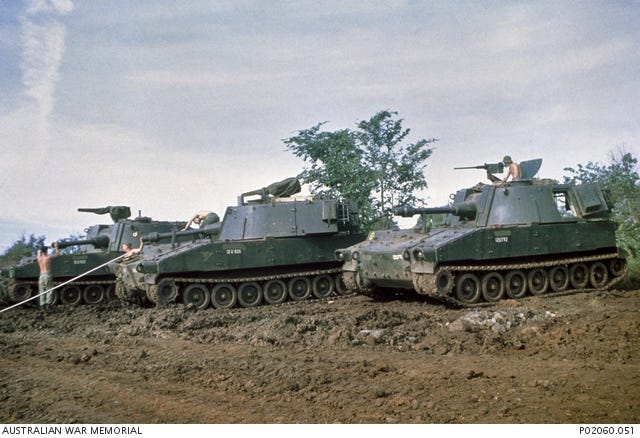
Source: AWM.Gov.Au
Like many military innovations, the M109 was designed to enhance and replace earlier models. During the early Cold War, the U.S. Army utilized the M52 and M44 howitzers, both based on modified light tank chassis. Although these models offered improvements in protection and design, they also faced significant drawbacks, such as toxic fumes from the M44's 155mm howitzer. The M109 was born from the necessity to address these issues, leading to a more effective self-propelled artillery system.
The design of self-propelled artillery on tank chassis provided cost savings and ease of assembly, but the smaller size limited the turret's capability to handle larger shells. As artillery fire typically involves high volumes aimed at broad targets, the recoil generated by howitzers is more substantial than that of tanks, complicating the design of their carriage systems.
By 1952, the emergence of counter-battery fire, aided by radar, made open-topped platforms like the M44 less viable. The limited rotational capabilities of existing self-propelled howitzers necessitated vehicle movement for targeting beyond their arcs. In response, the Ordnance Tank Automotive Command initiated designs for the T196 and T195, both of which would ultimately evolve into the M109 and M108.
Both designs featured specially constructed chassis designed to accommodate larger rotating turrets, allowing for more effective artillery response during conflicts like the Korean War. The necessity for a fully rotating turret became critical as U.S. forces adapted to new warfare scenarios, anticipating potential nuclear threats.

Source: Vancouvergunners.ca
The T196 model incorporated features such as recoil spades and powered turret traverse to manage the heavier 155mm artillery. Additionally, the vehicle's body was constructed from aluminum for weight savings, allowing for amphibious capabilities. In 1959, the transition to diesel engines offered improved efficiency and safety, resulting in the T195E1 and T196E1 prototypes.
Three years later, the T195E1 and T196E1 were officially adopted as the M108 and M109 after extensive testing and design refinements.
That Tube is a Little Underwhelming...
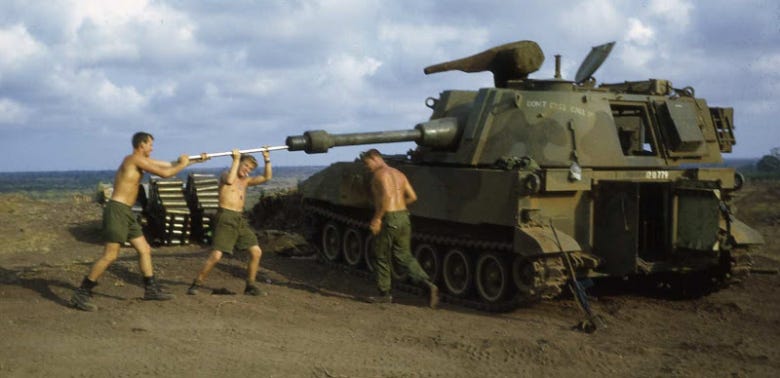
The M108 and M109 were characterized by their large, horseshoe-shaped turrets on a tracked chassis with seven roadwheels. Weighing in at 31.8 mm thickness, the M109's armor was designed to withstand small arms fire. The Detroit Diesel engine provided a top speed of 56 km/h (35 mph) with a crew of five, including two cannoneers for the M109.
The M108, with its 105mm cannon, was deemed suitable for lighter formations, but it failed to meet the demands of high-intensity conflicts. Consequently, production ceased in 1963, with all M108 battalions transitioning to the M109.
Cold War Expectations Colliding with Vietnam Reality
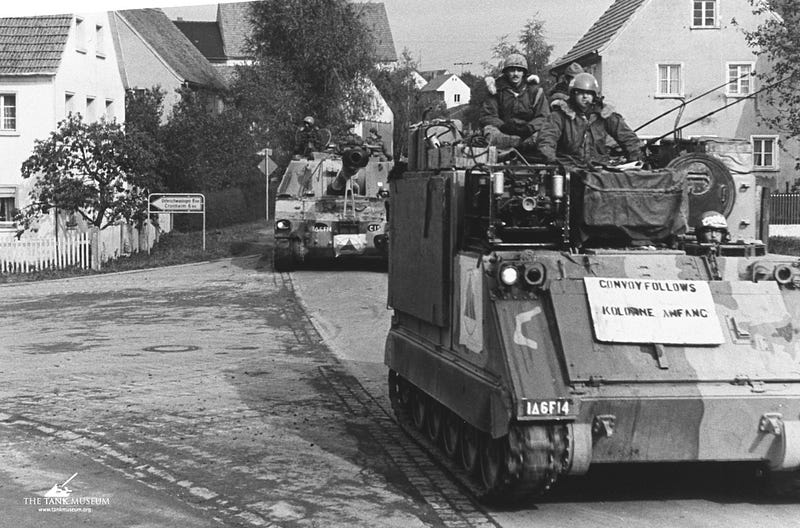
While the M109 was intended for conventional warfare, its deployment in Vietnam revealed operational challenges. The jungle terrain concealed enemy movements, forcing artillery units to adapt by dispersing their batteries across firebases for mutual coverage.
The Vietnam War saw greater reliance on towed artillery due to its portability; however, the M109's rotating turret proved advantageous in targeting threats without needing to reposition the entire unit.
Despite being airlifted into challenging terrain, M109s were not prevalent, and their operational patterns resembled those of previous conflicts, relying heavily on indirect fire support for infantry.
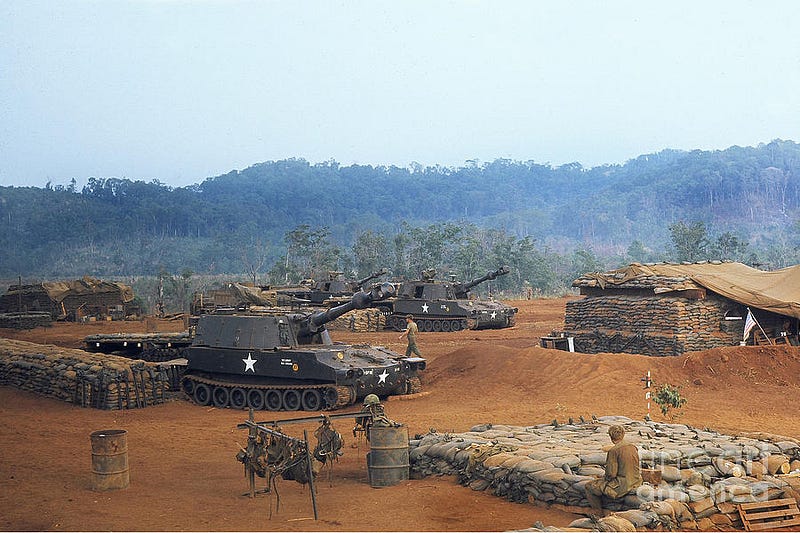
Though the M109's deployment in Vietnam was limited, it was utilized in various capacities, providing artillery support as needed.
Extending the Reach and Options of Destruction
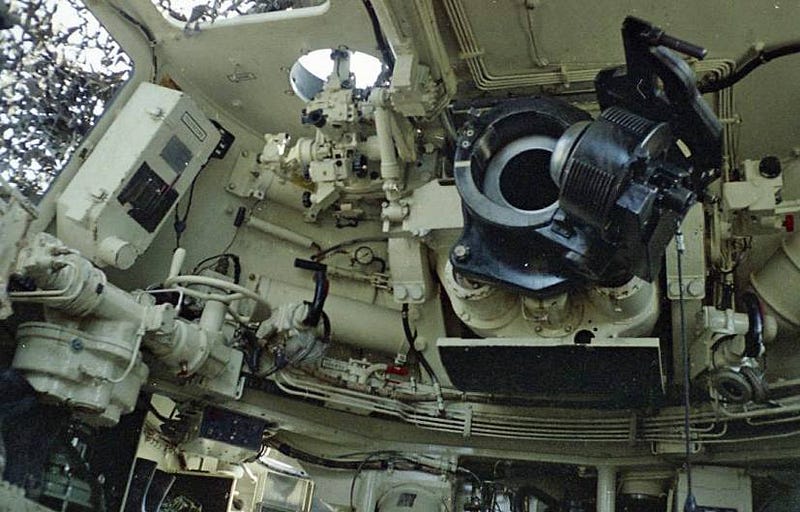
The M109's design continued to evolve, with its short cannon tube adapted for high-angle shots. However, in Vietnam, it struggled against longer-range Soviet artillery. To counter this, the longer M185 cannon was introduced, improving the M109A-1's range and effectiveness.
The M109's upgrades continued, culminating in the M109A-6 Paladin, which featured an Automatic Fire Control System (AFCS) and enhanced crew safety measures.
Refusing to be Replaced or Retired
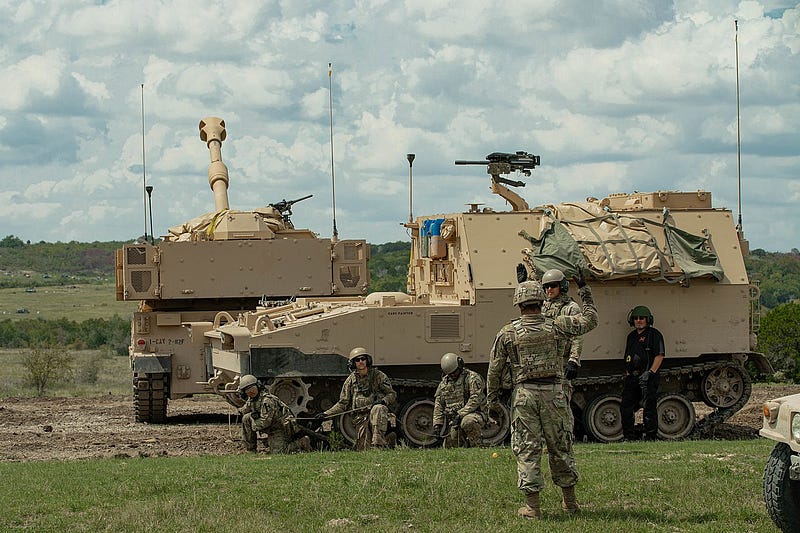
The M109's versatile chassis has been adapted for various roles, including the M992 Field Artillery Ammunition Supply Vehicle (FAASV), which provides armored support for transporting munitions.
Despite its widespread adoption during the Cold War, many countries have phased out the M109 in favor of newer systems. However, it continues to find relevance in modern conflicts, demonstrating its enduring legacy in artillery.
In recent years, U.S. military focus has shifted to counter emerging threats in the Asia-Pacific region, leading to the development of new artillery systems like the XM1299 Extended Range Cannon Artillery (ERCA), which aims to enhance the U.S. Army's firepower and precision.
As the M109 remains in service with various nations, it has transitioned from a Cold War relic to a vital component in contemporary military strategies, proving that its story is far from over.